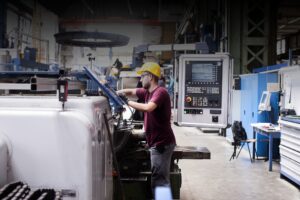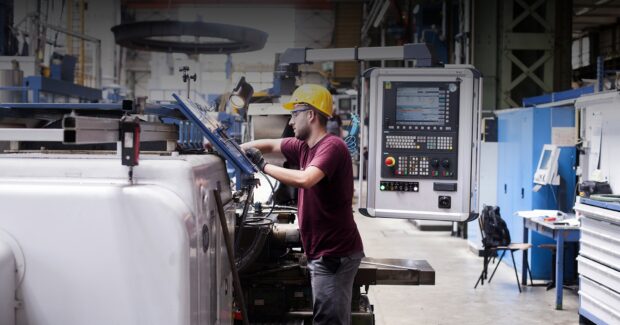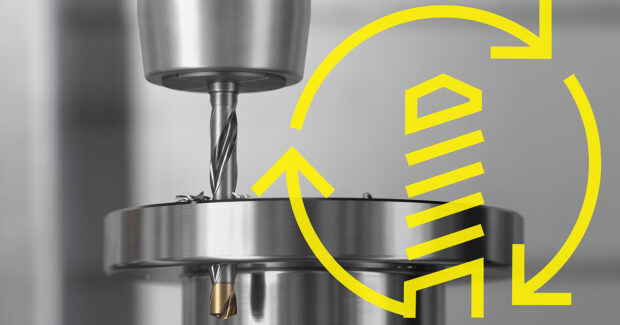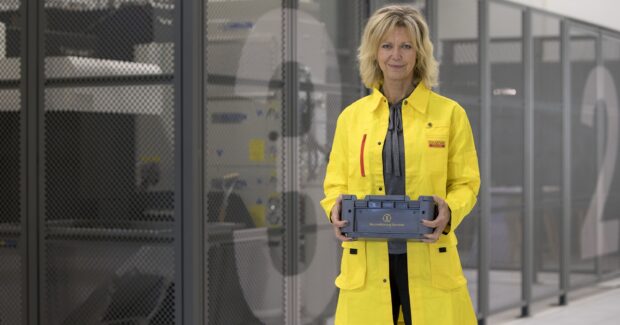The Sharpest Tool in the Box: Four Things to Know About Using Reconditioned Tools
Tool reconditioning can be an effective and sustainable tooling strategy. It rejuvenates every aspect of the product and returns it to its original manufacturing standard.
Posted: August 18, 2023

Time is money in manufacturing. Drilling, milling and reaming all place enormous stress on metalworking tools. But there is an alternative to buying new solid carbide tools every time: tool reconditioning, which can extend a cutting tool’s life span — cost effectively and sustainably.
The word “reconditioned” can ignite visions of worn, overworked products that are inferior to brand-new versions. The reality is, as long as shops purchase from a reputable tool manufacturer, reconditioned tools can deliver the same consistent results as they did upon initial purchase. Outlined below are four considerations to help shops incorporate tool reconditioning into their tooling strategy.
- Repair vs. Reconditioning
First, shops should realize that reconditioning isn’t equal to repair. When repairing a piece of equipment, only the defective parts are investigated and replaced. Reconditioning, on the other hand, rejuvenates every aspect of the product and brings the part back to its original manufacturing standard. As opposed to a repaired part, shops should expect reconditioned products in the same, perfect condition as a brand-new part.
Due to the usage of solid carbide tools, it is not a case of if the tool will wear out, but when. Because of this inevitability, reconditioned tools can help reduce a shop’s total tool expenditure. In that regard, shops should look for a tool producer that considers reconditioning from the design phase. Typically, tool CAD data will be stored so that reconditioned versions can perfectly match the tool’s original geometry and coating. For custom-made cutting tools, this is essential to meet the original tool specifications.
- Identifying Tool Wear

Tool wear varies dramatically depending on its application. In automotive or aerospace manufacturing, where tools are required to drill many holes in a single run, producers may experience more damage. Similarly, industries that operate in difficult settings, like aerospace and oil and gas, may expose the tool to harsher environments, further jeopardizing its life span.
Shops should learn to identify types of tool wear to determine which tools are viable to be reconditioned. Tool wear can vary depending on the mechanism and cause of wear. The most common type of tool wear is uniform flank wear resulting from high cutting speed and low feed or low wear resistance. Certain types of wear may be more viable for reconditioning than others.
- Reconditioning Process
The reconditioning process improves tool longevity, but shops want tools that can be reconditioned and deployed several times during their life span. With this in mind, look for tool manufacturers whose tools can undergo multiple reconditioning cycles without compromising quality.
Companies like Sandvik Coromant that offer their own tool reconditioning service encourage customers to proactively incorporate reconditioning into their tooling strategies. Almost all solid carbide tools by Sandvik Coromant are suitable for reconditioning. For example, the CoroDrill 860-GM from Sandvik Coromant is guaranteed for up to three reconditions. This effectively provides four tools in a single solution.
Many shops underestimate how easy it can be to implement a reconditioning program. Companies like Sandvik Coromant make the process easy and convenient by offering ready-made shipping boxes with all the necessary supplies to pack and send tools in. When the reconditioning process is complete, the tools are shipped back, generally within four weeks. A laser mark on the tool shank indicates each reconditioning service performed to keep track of the number of times a tool has been reconditioned and make sure it’s within its maximum number of regrinds (NORGMX).
- The Case for Sustainability
Solid carbide tools are often made using a number of finite raw materials, such as tungsten and cobalt, making multiple repurchases unsustainable. The ability to reuse a single tool multiple times through reconditioning, in place of simply purchasing new tools, plays a major role in sustainability efforts.
Misconceptions about reconditioning must be dispelled, and the practice of reconditioning can play a key role in sustainability planning. Reconditioning can help shops make the most of their tools while extending a tool’s life span — sometimes by up to three times its expected duration. And, at the end of the solid carbide tool’s life cycle, some companies, like Sandvik Coromant, also have buy-back programs, where your solid carbide will be recycled and used to create new tools.
Subscribe to learn the latest in manufacturing.






